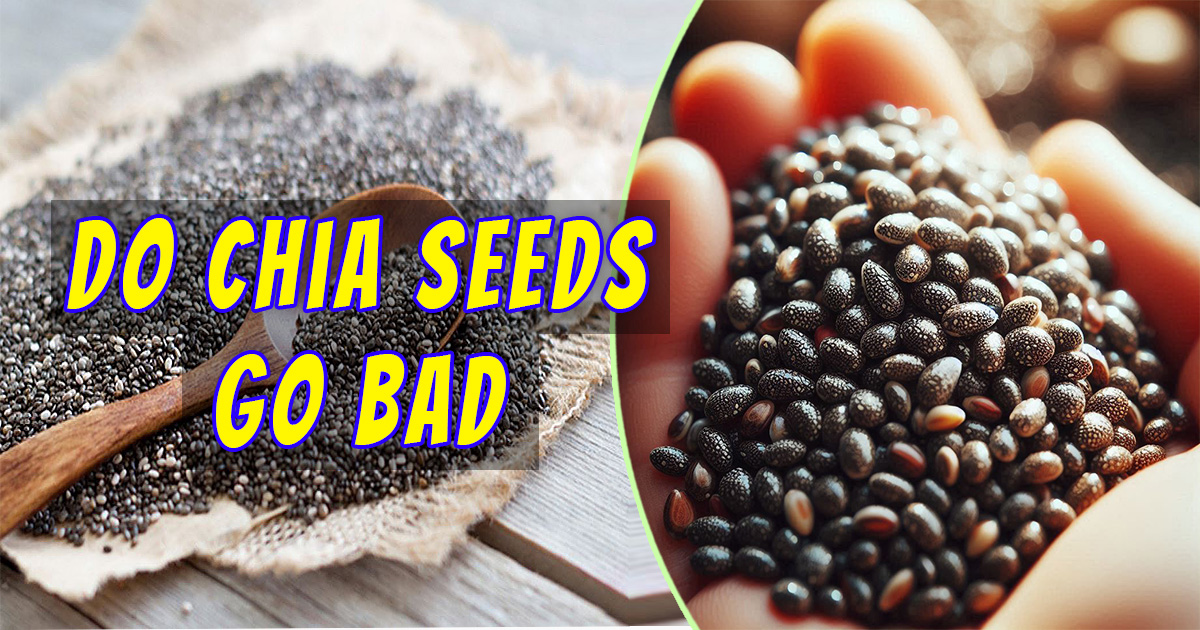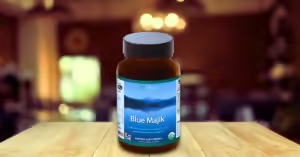Chia seeds have become a popular superfood, known for their nutritional value and versatility in various recipes. However, one question that often arises is: Do chia seeds go bad? Like all food products, chia seeds can lose their freshness over time, but how long do they really last? In this article, we’ll explore everything you need to know about chia seeds’ shelf life, signs that they’ve gone bad, and the best ways to store them to maximize freshness.
What Are Chia Seeds and Why Are They Popular?
Chia seeds are tiny black or white seeds that come from the Salvia hispanica plant, which is native to Mexico and Guatemala. These seeds are packed with nutrients, including omega-3 fatty acids, fiber, protein, antioxidants, and various vitamins and minerals. Because of their nutritional value, chia seeds are used in smoothies, puddings, salads, and even baked goods.
Their popularity stems from their versatility and health benefits, but like any food, chia seeds are not immune to spoilage. So, let’s dive into whether chia seeds can go bad and how to ensure they remain fresh.
Do Chia Seeds Go Bad? Understanding Their Shelf Life
The simple answer to the question, Do chia seeds go bad, is: Yes, chia seeds can go bad, but they have a surprisingly long shelf life when stored correctly. When kept in ideal conditions, chia seeds can last for up to 2 years or more. The reason for their longevity is their high antioxidant content, which helps preserve them naturally.
That said, chia seeds can still go rancid or lose their potency if not stored properly. Factors like exposure to air, moisture, or light can accelerate the degradation process.
How Long Do Chia Seeds Last?
Chia seeds have a shelf life of 1 to 2 years when stored at room temperature in a cool, dry place. However, if you want to extend their lifespan even further, storing them in the refrigerator or freezer can help them last up to 3 to 4 years.
The shelf life of chia seeds is generally divided into two categories:
- Unopened package: Can last up to 2 years or longer if stored in a cool, dry place.
- Opened package: Should be consumed within 1 year for best freshness, but can last longer if stored properly in an airtight container.
Just like chia seeds, understanding the shelf life of other natural products is important. If you’re wondering about oils, check out our guide on Does Coconut Oil Go Bad.
Signs Chia Seeds Have Gone Bad
So, how can you tell if your chia seeds have gone bad? While chia seeds don’t spoil in the same way that fresh produce does, there are some noticeable signs that indicate they are no longer good to eat. Here are a few key indicators:
- Smell: Fresh chia seeds have a neutral or mild nutty aroma. If they develop a strong, sour, or rancid odor, it’s a sign that they’ve gone bad.
- Taste: If your chia seeds taste bitter or off, it’s a clear indication that they’ve spoiled. Fresh chia seeds should have a mild, pleasant taste.
- Texture: When chia seeds go bad, they may clump together due to moisture exposure. They should be dry and free-flowing. For more information on how to identify spoiled food, visit Food Safety.
- Appearance: Spoiled chia seeds might appear discolored or develop mold if they’ve been exposed to moisture.
- Nutritional Benefits of Fresh Chia Seeds
While understanding if chia seeds go bad is important, it’s also crucial to know why maintaining their freshness matters. Fresh chia seeds pack an incredible nutritional punch, offering numerous health benefits:
Rich in Omega-3 Fatty Acids: Chia seeds are a great plant-based source of omega-3 fatty acids, which are essential for brain health and reducing inflammation. Omega-3s also support heart health by lowering bad cholesterol.
High Fiber Content: With about 10 grams of fiber per ounce, chia seeds are fantastic for digestion and maintaining regular bowel movements. A diet rich in fiber can help control blood sugar levels and reduce the risk of heart disease.
Packed with Antioxidants: Fresh chia seeds contain antioxidants that help fight free radicals in the body. These antioxidants prevent cell damage, slowing down the aging process and reducing the risk of chronic diseases. Alongside incorporating superfoods into your diet, you might also be interested in natural skincare. Discover the Rosemary Bar Soap Benefits to enhance your wellness routine.
Source of Protein: Chia seeds provide a plant-based protein option, making them perfect for vegetarians and vegans. Protein is essential for muscle repair and overall body function.
By ensuring your chia seeds remain fresh, you can continue to reap these valuable health benefits, enhancing your overall diet and well-being.
How to Incorporate Chia Seeds Into Your Diet
Now that you know the shelf life and benefits of chia seeds, you might be wondering how to incorporate them into your daily meals. Luckily, chia seeds are extremely versatile and easy to use in various recipes.
Smoothies: Add a tablespoon of chia seeds to your morning smoothie for an extra boost of nutrients. You can blend them in or sprinkle them on top for a crunchy texture.
Chia Pudding: Mix chia seeds with almond milk, a dash of honey, and vanilla extract to create a delicious and healthy chia pudding. Let it sit overnight in the fridge, and you’ll have a nutritious breakfast ready to go.
Baked Goods: Chia seeds can be added to bread, muffins, and cookies to increase their fiber content. They blend well into the dough and don’t alter the taste much.
Salads and Oatmeal: Sprinkle chia seeds on top of your salads or oatmeal for an added crunch and nutritional value.
By adding chia seeds to your diet in creative ways, you’ll be able to enjoy their health benefits while keeping your meals interesting.
How to Prevent Chia Seeds From Going Rancid
Even though chia seeds have a long shelf life, it’s important to take extra care in preventing them from going rancid. Here are a few tips:
Keep Away From Strong Smells: Store chia seeds away from strong-smelling foods like onions and garlic. Chia seeds can absorb surrounding odors, which may alter their taste and freshness.
Check Packaging: If you purchase chia seeds in bulk, consider dividing them into smaller portions. Store the portions in airtight bags or jars to avoid repeatedly exposing all your chia seeds to air and moisture.
Label and Rotate: Always label your containers with the purchase date and rotate your stock, using the oldest seeds first. This ensures that you consume them while they’re still fresh.
Taking these steps can help prevent your chia seeds from going bad and losing their nutritional benefits over time.
Can You Eat Expired Chia Seeds?
It’s important to note that there’s a difference between chia seeds that are expired and those that have gone bad. Expired chia seeds may not be as potent in terms of nutrition and flavor, but they’re generally still safe to eat if stored properly.
However, if chia seeds show any signs of spoilage—such as a bad smell, taste, or mold—you should avoid eating them. Consuming rancid chia seeds can lead to digestive issues or other health concerns, so it’s best to err on the side of caution.
How to Store Chia Seeds for Maximum Freshness
Proper storage is key to ensuring your chia seeds stay fresh for as long as possible. Here are some tips on how to store them correctly:
- Use an Airtight Container: Store chia seeds in an airtight container to keep out moisture and air, both of which can cause them to spoil faster.
- Keep Them in a Cool, Dry Place: The pantry is a great place to store chia seeds, but make sure it’s away from direct sunlight and heat.
- Refrigerate for Longer Shelf Life: If you want to extend their shelf life, consider refrigerating them. The cooler temperature slows down the oxidation process.
- Freeze for Maximum Freshness: You can also freeze chia seeds. Simply place them in an airtight, freezer-safe container, and they can last up to 4 years.
Chia Seeds: A Long-Lasting Superfood
Chia seeds are not only a versatile and nutritious superfood, but they also have an impressively long shelf life when stored properly. Do chia seeds go bad? Yes, but by following proper storage guidelines, you can extend their freshness and enjoy their health benefits for years.
Whether you’re adding chia seeds to your smoothie, baking them into a loaf of bread, or enjoying them as a snack, keeping them fresh will ensure you continue to benefit from their rich nutritional profile. By keeping them in an airtight container, refrigerating or freezing them, and watching for signs of spoilage, you can keep chia seeds as a staple in your healthy diet for a long time.
Frequently Asked Questions About Chia Seeds Going Bad
1. Can chia seeds get moldy?
Yes, chia seeds can develop mold if exposed to moisture. This is more likely to happen if they’re stored in a damp environment.
2. How can you tell if chia seeds are fresh?
Fresh chia seeds should have a neutral smell and taste, with a dry, free-flowing texture.
3. Can you freeze chia seeds to make them last longer?
Yes, freezing chia seeds can extend their shelf life to up to 4 years.
4. What happens if I eat bad chia seeds?
Eating bad chia seeds can cause digestive discomfort, and in rare cases, food poisoning if mold or harmful bacteria have developed.
Conclusion: Keeping Chia Seeds Fresh for Longer
To sum up, chia seeds are a long-lasting superfood, but like all foods, they can go bad if not stored properly. Do chia seeds go bad? Yes, but with proper storage—such as keeping them in an airtight container and storing them in a cool, dry place—you can ensure they stay fresh for up to 2 years or longer. For maximum freshness, consider refrigerating or freezing them.
By following the tips outlined in this guide, you can enjoy the health benefits of chia seeds without worrying about spoilage. Always be mindful of the signs that chia seeds have gone bad, and when in doubt, it’s best to discard them.
For more healthy living tips and food storage advice, visit My Read Magazine

Joseph Bush is a seasoned writer and researcher with over 7 years of experience covering a wide range of general topics, from lifestyle and technology to business and current events. He is dedicated to producing fact-checked, reader-friendly content that informs, engages, and empowers readers.
Throughout his career, Joseph has followed strict editorial guidelines, relied on reputable sources, and ensured every article meets the highest standards of accuracy and clarity. His expertise spans multiple fields, allowing him to explain complex topics in a way that’s easy to understand.
Passionate about continuous learning, Joseph stays updated on industry trends and best practices to deliver trustworthy, well-rounded insights. Readers can rely on his work for its credibility, depth, and real-world relevance.




